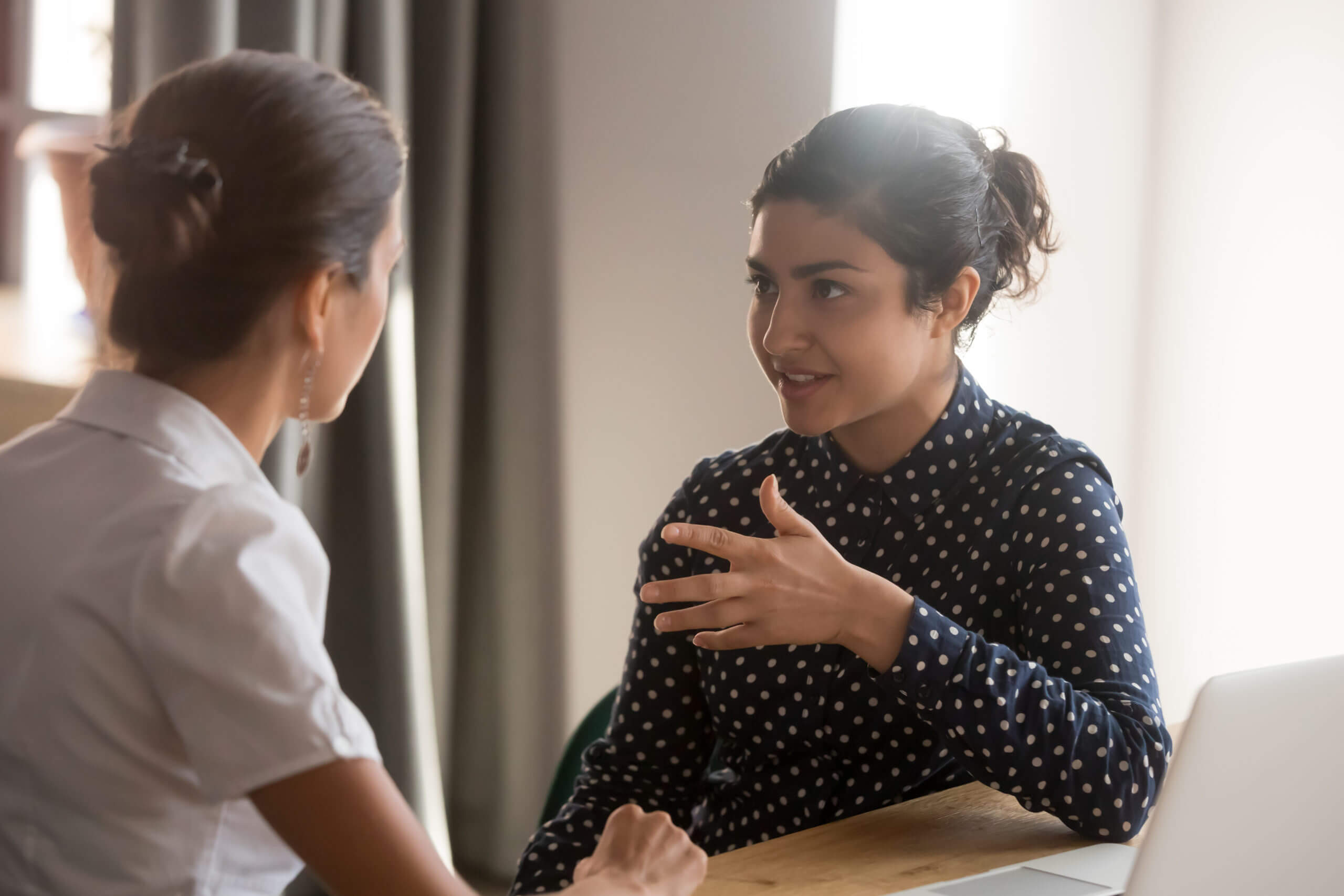Communicating with confidence will get you heard in seminars and discussions at school and university, set you apart from other candidates in job interviews, and boost your career development prospects.
Communication skills aren’t all about talking. They include non-verbal skills such as body language and active listening; they can be developed if you focus your attention on how you are coming across in your everyday interactions with others. So – start building your confidence and enhancing your ability to work with others using these techniques:
- Building rapport
- Talking with your body
- Making eye contact
- Listening actively
- Relaxing and being yourself
Building Rapport
Building rapport with someone is essentially a bridge-building exercise, with the end goals of establishing a connection between both parties and making both feel comfortable and good about themselves. Rapport is especially important in one-on-one situations such as interviews. To achieve this, you might:
- Make them feel important – seeming distracted or disinterested is the quickest way to derail a conversation; invest in what is being said and how it’s being delivered so that you’re picking up and acting on all the social cues presented to you.
- Find mutual territory – Perhaps you share a passion for the same sport or type of music; if they hint at some shared ground between you, steer conversation towards it.
- Tap into empathy – It feels good to be understood, and if you can put yourself in the shoes of your conversational partner, recognising their motivations and boundaries, they’ll do the same for you.
- Respond to humour – Smiling or laughing in recognition of a joke or lighthearted remark will make someone feel happily accepted in your company.

Establishing rapport will get you places because you’ll be remembered as an astute, giving communicator. Whether chatting with a peer or a superior, remember that making them feel comfortable and accepted will ease everything else, creating an ideal atmosphere for dialogue. At the same time remember that if the conversation has some particular purpose, such as an interview, once you have established common ground be ready to move back to the real topic of your meeting.
Talking with your body
Body language is an under-appreciated tool in the communicaton toolkit. Some estimates suggest it is 50-70% of how you communicate. Your body can betray what you are really feeling – giving hints that you are truthful or deceitful, engaged or bored. This means an understanding of what our bodies are telling others is of huge importance.
In general terms, folding your arms suggests you are feeling defensive, while opening your body displays open-mindedness. Standing with your head down or looking to one side of the person speaking to you betways a lack of honesty about what you are saying, or that you wish the conversation was not happening. Quick movements betray anxiety where smooth moves show confidence. Think of your last few conversations and consider what non-verbal signals you might have been giving.
Entrepreneur has a handy list of tips when it comes to looking out for the most common non-verbal gestures. When it comes to your own actions, though, keeping it authentic, positive and engaged is a great base to build upon for convincing communication.
Making eye contact
Eye contact is the most crucial aspect of body language. It can communicate confidence, reliability, integrity and honest. Meeting eyes with someone while you are chatting is a signal that you are both fully invested: a mutually-reassuring statement of trust and engagement.
In the context of interviews or in other situations where it’s natural to feel a little intimidated, a common and off-putting mistake is to avoid eye contact altogether. While this is often interpreted as timidity, it can also be read as a desire to hide something and an unwillingness to engage properly in conversation. Avoiding eye contact is even used by police to spot a liar!
However constant eye contact can be decidedly unnerving, so striking the appropriate balance is key here. In general, eye contact while you’re talking can really hammer home and emphasise a point, but if you’re exploring an idea or forming a sentence in your head, it’s perfectly acceptable to break eye contact as a sign you’re thinking. When listening, eye contact means you are paying attention, so make sure to utilise this aspect of body language – even if you feel you’re forcing yourself. The important thing is not to stare at someone, which comes across as aggressive, but to make sure that you do not go for long periods without looking them in the eye.
Listening actively
This technique comes in two parts: focusing fully on the speaker and communicating that focus back to them. Combined, you’re ensuring that you’re not missing any important information, and that your conversation partner is emboldened and comfortable in the knowledge that you’re taking them seriously. It’s called “active listening”, and it makes for the best conversations.
Setting aside distracting thoughts, banishing feelings of panic, and even stopping yourself from mentally planning what you’re going to say next all help you engage with the present. Remember to ‘listen’ to body language too, to notice the other person’s body language and interpret how they are feeling about the conversation.
Offering feedback to the speaker to show you’re listening fully helps encourage the flow of conversation. This support can be communicated in the following ways:
- Nodding every now and then to show you’re following.
- Using facial expressions – smiling, frowning or even grimacing – where appropriate.
- Leaning forward or in other ways presenting body language that communicates “I’m interested”.
- Offering regular little pieces of supportive speech like “yep” or “uh-huh”.
This is what’s called “backchanneling” or and you’ll find it’s something you rely on when speaking, to judge how your speech is being interpreted. It’s what’s missing when you perform a speech to many people and one of the reasons these can be so nerve-wracking. Make sure you backchannel to put your conversational partner at their ease.
Relax and be yourself
Everyone experiences degrees of social anxiety; it is perfectly natural to feel uncomfortable in certain social situations. Even a normally relaxed and confident communicator will feel uneasy in some situations. The trick is to find a way to relax.
There are many techniques for relaxing your mind: the “superman” pose (hands on hips, legs wide apart) help some people build confidence, while deep, long, rhythmic breaths reduce your heart rate so you’re not breathless when you talk. This article provides some interesting alternative tips on remaining calm. Strategies such as these are important and will prevent you from being overcome by nerves. The more you succeed, the less you’ll have to refer to them – your confidence will grow as your anxiety shrinks.
Whether talking to a cashier, a colleague or a captain of industry, remember to always be yourself. You’ll find people can detect authenticity and respond well to it. Openness is important too. Someone whose anxeity is obvious can lead people to suspect that they have something to hide, perhaps something more sinister than just a lack of self-confidence. Expending excess energy creating an image of yourself that masks your true identity is exhausting and ultimately unconvincing. It will only stall the development of your communication skills. Smile, relax, be confident in yourself!
Communication is widely regarded as the key to success: it’s how you open doors, influence people, and climb the career ladder. Use our five tips to improve your communication skills. You’ll find new confidence in yourself, and renewed energy and richness in your conversations that will serve you for the rest of your life.
